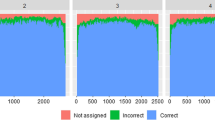Summary
Two strategies for crossbreeding of indigenous and exotic cattle for milk production in the tropics,viz. rotational crossing and formation of a composite breed, have been compared. Genetic considerations suggest that rotational crossing would lead to somewhat better dairy performance, mainly because of more heterozygosity. Predictions based on the performance of adjacent genetic groups as obtained from a comprehensive literature review point in the same direction.
Rotational crossbreeding depends on a continuous introduction of bulls of both parental breeds. The herd will consist of 2 (or more) genetic groups, which might be inconvenient for breeding arrangements, but provides more flexibility. The system requires good organisation and is most suitable in large farms. In small scale dairying the composite breed strategy is the most practical approach to dairy cattle breeding in the tropics.
Résumé
Deux stratégies pour le croisement entre le bétail indigène et le bétail exotique pour la production laitière sous les Tropiques, à savoir le croisement rotationnel et la formation d'une race composite, ont été comparées. Des considérations génétiques suggèrent que le croisement rotationnel amènerait quelque chose de plus performant au niveau laitièr, principalement dù à l'augmentation de hétérozygotie. Des prédictions, basées sur les performances de groupes génétiques adjacents, issues de l'étude complète de la littérature donnent la même analyse.
Le croisement rotationnel est basé sur l'introduction continuelle de taureaux venant des deux races parentales. La horde consistera en 2 (ou plus) groupes génétiques, ce qui peut être gênant pour le croisement mais permet plus de flexibilité. Le système demande une bonne organisation et est préférable dans les grandes fermes. A une échelle de production laitiere plus faible la stratégie de la race composite est l'approche la plus pratique pour le croisement du cheptel laitier sous les Tropiques.
Resumen
El artículo compara dos estrategias de cruzamiento entre vacuno lechero exótico e indígena en los trópicos: el cruzamiento rotativo y la formación de una raza híbrida. Las consideraciones genéticas sugieren que el cruzamiento rotativo debería llevar a una mejor producción lechera, sobre todo debido a un aumento de la heterozigosis. Las predicciones basadas en el rendimiento de grupos genéticos adyacentes determinado a partir de una revisión bibliográfica apuntan en la misma dirección.
El cruzamiento rotativo require una introducción contínua de toros de las dos razas parentales. El rebaño consistiría de 2 (o más) grupos genéticos, lo que -si bien permite una mayor flexibilidad- puede dificultar la planificación de la reproducción. El sistema requiere una buena organización y resulta más factible en explotaciones grandes. En explotaciones pequeñas de los trópicos, la formación de una raza híbrida es la estrategia más prática en lo que a cría de vacuno lechero se refiere.
Similar content being viewed by others
References
Cunningham, E. P. &Syrstad, O. (1987). CrossbreedingBos indicus andBos taurus for milk production in the tropics. FAO Animal Production and Health Paper 68. Food and Agriculture Organization of the United Nations, Rome.
Dickerson, G. E. (1973). Inbreeding and heterosis in animals. In: Proceedings of the Animal Breeding and Genetics Symposium in Honor of Jay L. Lush. American Society of Animal Science, Champaign, Ill. pp 54–77.
Dickerson, G. E. (1993). Evaluation of breeds and crosses of domestic animals. FAO Animal Production and Health Paper 108. Food and Agriculture Organization of the United Nations, Rome.
Hill, W. G. (1982). Dominance and epistasis as components of heterosis.Zeitschrift für Tierzüchtung und Züchtungsbiologie,99, 161–168.
Kale, K. M. &Mandakmale, S. D. (1993). Mortality patterns in Gir crosses.Animal Genetic Resources Information,11, 67–73.
Kinghorn, B. (1980). The expression of “recombination loss” in quantitative traits.Zeitschrift für Tierzüchtung and Züchtungsbiologie,97, 138–143.
Koch, R. M., Dickerson, G. E., Cundiff, L. V. &Gregory, K. E. (1985). Heterosis retained in advanced generations of crosses among Angus and Hereford cattle.Journal of Animal Science,60, 1117–1132.
Syrstad, O. (1989). Dairy cattle crossbreeding in the tropics: performance of secondary crossbred populations.Livestock Production Science,23, 97–106.
Syrstad, O. (1990). A genetic interpretation of results obtained inBos indicus × Bos taurus crossbreeding for milk production. In: Proceedings of the 4th Conference on Genetics Applied to Livestock Production, Edinburgh, XIV: pp 195–198.
Thorpe, W., Morris, C. A. &Kangethe, P. (1994). Crossbreeding of Ayrshire, Brown Swiss and Sahiwal cattle for annual and lifetime milk yield in the lowland tropics of Kenya.Journal of Dairy Science,77, 2,415–2,427.
Author information
Authors and Affiliations
Rights and permissions
About this article
Cite this article
Syrstad, O. Dairy cattle crossbreeding in the tropics: Choice of crossbreeding strategy. Trop Anim Health Prod 28, 223–229 (1996). https://doi.org/10.1007/BF02240940
Accepted:
Issue Date:
DOI: https://doi.org/10.1007/BF02240940




